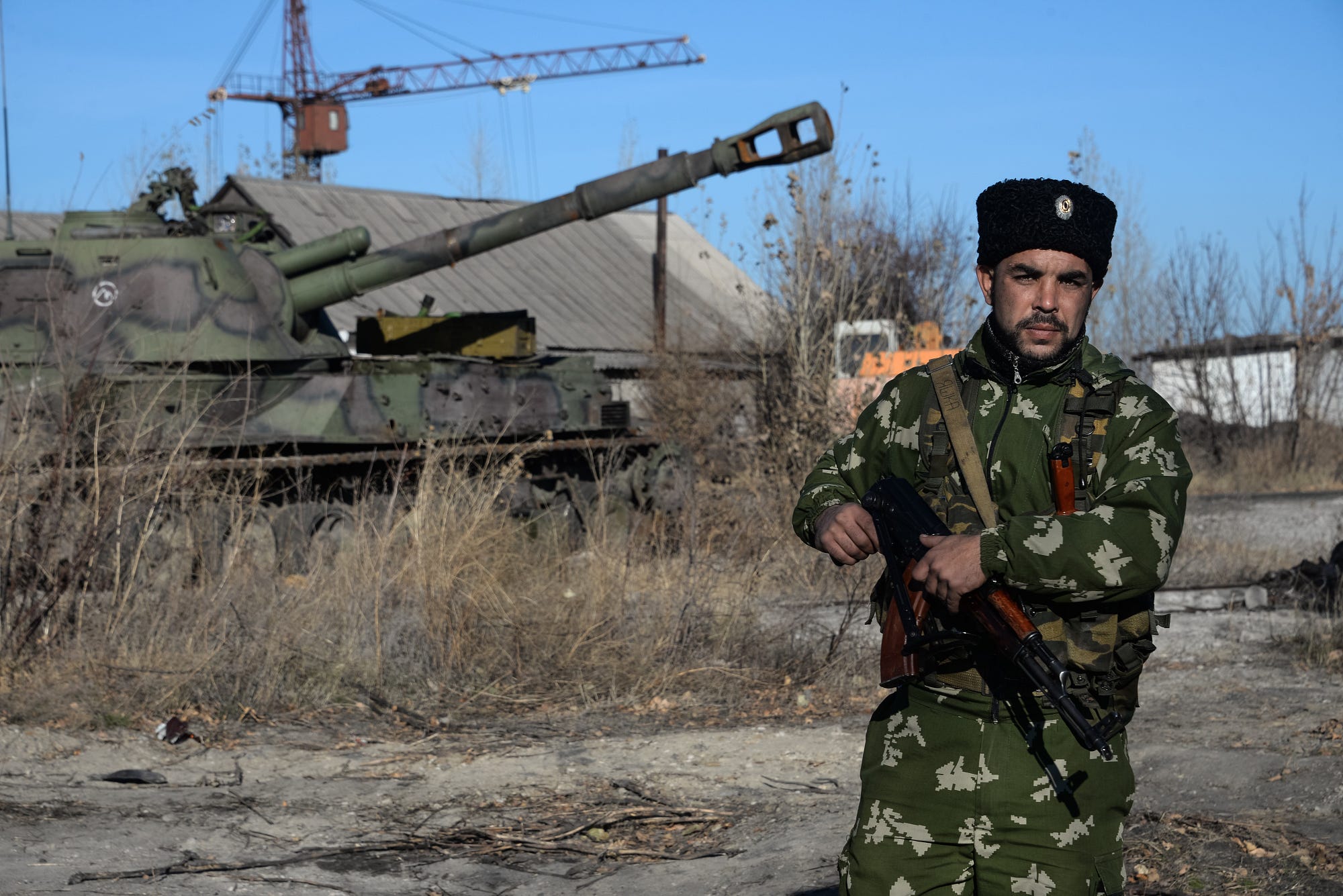Ex-colonel wants the Kremlin to recruit crazy cavalry
These days, they might not ride into battle on horseback. But creating Cossack units within the Russian military is an idea that’s gained currency as the Kremlin tries to wage regional and internal wars.
That’s the nutshell behind a new proposal from retired Capt. Konstantin Sivkov in the influential Military-Industrial Courier newspaper.
According to the paper, the Kremlin should create Cossack units as a means to help the “maintenance of law and order” and for responding to military and state emergencies. Further, Russia should organize Cossacks into a new “kind of troops of the Russian armed forces,” Sivkov wrote.
To be sure, this is just a proposal. But the paper is widely read in Russian military circles and by senior officials. Sivkov also wants Cossack militias to work closer with the uniformed military.
“Participating with the armed forces of the Russian Federation or independently in the fight against sabotage and reconnaissance groups, the destruction of terrorists and armed gangs,” he explained.
It’s not an entirely new proposal. But Sivkov is taking part in a debate surrounding Russia’s military doctrine, which the Kremlin is updating for 2015. This is the principal guide by which Russia trains and prepares for war.
There’s plenty to discuss right now. The Russian military is discreetly involved in a war in eastern Ukraine, challenging NATO in the air and at sea—and the military is fresh off the Crimea invasion.
There’s a low-boil insurgency in the Caucasus. And that’s all contributed to the back-and-forth discussions in military journals regarding the future shape of the armed forces.
Defining Cossack can be a bit slippery. One definition is that they’re a semi-anarchic, martial and nationalistic subculture traditionally associated with the country’s Don region.
Also depending on who you ask, they’re a symbol of Russian values and a distinct ethno-cultural group—or the descendants of horse-riding cowboys who tear-assed across the lawless frontiers of pre-modern Russia.
They faced extreme repression in the Soviet Union. Today, Cossacks are making a comeback as something more akin to an ideological movement embodying the Orthodox Christian faith, patriotism and militarism. Which has stretched the definition.
In the past two decades, there’s been attempts to incorporate Cossacks into military. In the 1990s, Boris Yeltsin tried to create Cossack regiments, according to Mark Galeotti, a Russian military and security expert at New York University.
But the effort failed due to lack of funds. The modern-day Cossacks, he noted, are like a cross between Renaissance festival reenactors and war enthusiasts. The culture was nearly destroyed by the Soviets, and the modern version strongly relies on a mythologized past.
 At top—Cossacks take part in a parade commemorating the victory over Napoleon on Aug. 12, 2012. Alexander Zemlianichenko/AP photo. Above—Cossack militiaman in Perevalsk, Ukraine on Nov. 11, 2014. Mstyslav Chernov/AP photo
At top—Cossacks take part in a parade commemorating the victory over Napoleon on Aug. 12, 2012. Alexander Zemlianichenko/AP photo. Above—Cossack militiaman in Perevalsk, Ukraine on Nov. 11, 2014. Mstyslav Chernov/AP photo
In some communities, Cossack enforcers act as whip-wielding, deputized police—and as a means to intimidate Muslim migrants moving north from the Caucasus. Cossack volunteers fought in the Chechen and Georgianwars, where they gained a reputation for brutality. They’ve also made an appearance in Crimea and eastern Ukraine.
But the brutal, irregular nature of Cossack units is an argument against incorporating them into the Russian military in any official capacity, Galleoti noted.
“I’ve been quite skeptical of the Cossack idea in the past, not least because the Russian officers I speak to are pretty skeptical, too,” Galeotti told War Is Boring in an email.
“Sure, we see Cossack auxiliaries in Ukraine, but their quality is very variable and their discipline often questionable—nothing to endear them to the professional officer class.”
The Kremlin also has good reasons to keep the Cossacks as an unofficial militia that can act on behalf of the state, but without a direct connection to it. This is useful for actions the Russian government doesn’t want to bring attention to, according to Volodymyr Yermolenko, a political analyst at Kyiv Mohyla Academy.
“They need Cossacks precisely as informal—outside the army—militia, able to be mobilized abroad without raising suspicion that the army is involved,” Yermolenko said. “The best way to avoid ‘invasion’ blame is to do the invasion with the help of informal groups which are said to be ‘autonomous’ and ‘volunteers.’”
“This is precisely what the Russians mostly do in Ukraine,” he added.
The same holds largely true for private military companies. In addition to Cossack units, Sivkov wants to define the “place and role of PMCs in the national security system.”
This means incorporating mercenaries into handling logistics, training and operating in “war zones and in peacekeeping operations,” Sivkov wrote.
Private security is big business in Russia. The Interior Ministry has its own security contractor, the Vnevedomstvenaya Okhrana, but military firms largely exist in a “gray legal zone,” according to the Moscow Times.
In October, lawmakers introduced a bill to legalize private military firms into the Duma. But it’s a slow process. On the other hand, it might have more success in the long run than incorporating the Cossacks.
No comments:
Post a Comment